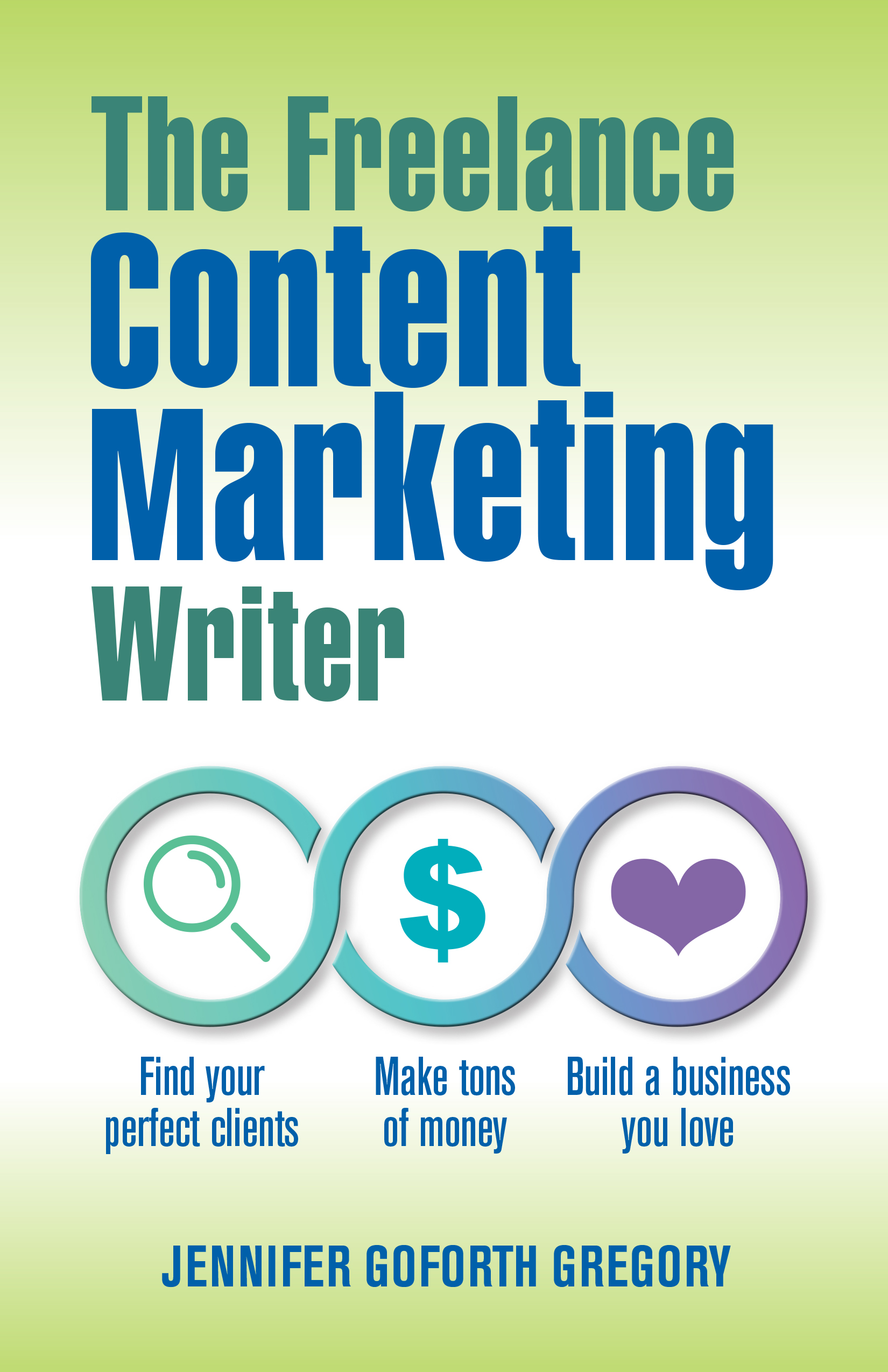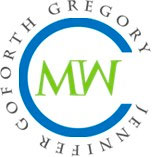10 Terms that Every Content Marketing Writer Should Know
 Note from Jennifer: Since I’m swamped this week working on a whitepaper and the third draft of my book, I decided to update a post from five years ago that I think is still very relevant. And I’m excited to announce that my book finally has a name (The Freelance Content Marketing Writer: Find Your Perfect Clients, Make Tons of Money and Build a Business You Love) and a COVER design. I posted a sneak peek of my design here. Thank you so much to everyone who helped with the name. It will be on sale in early May and hopefully up for pre-order soon.
Note from Jennifer: Since I’m swamped this week working on a whitepaper and the third draft of my book, I decided to update a post from five years ago that I think is still very relevant. And I’m excited to announce that my book finally has a name (The Freelance Content Marketing Writer: Find Your Perfect Clients, Make Tons of Money and Build a Business You Love) and a COVER design. I posted a sneak peek of my design here. Thank you so much to everyone who helped with the name. It will be on sale in early May and hopefully up for pre-order soon.
Freelance writers who are adding content marketing writing to their services often comment that they feel lost with the marketing lingo that their clients toss around. Today I wanted to post a cheat sheet of terms that you will most likely hear brands toss around. In the coming weeks, I will explain some more unfamiliar words, so this is just the beginning of the vocabulary lesson. But don’t worry! Unlike fourth grade, there isn’t going to be a quiz at the end.
But if you can manage to work these buzzwords into the conversation when you are interviewing for content marketing writing gigs, you can help increase your odds of getting the assignment by illustrating your understanding of content marketing.
Here are 10 terms that every content marketing writer should know:
B2B (Business-to-Business) – This means that a company sells stuff to other businesses, such as a brand that makes software for hotels to manage their properties. Some companies are both B2B and B2C, such as Adobe, which sells technology to businesses as well as software for people to use at home. Because you need an understanding of the audience, B2B content tends to pay higher and I recommend that every content marketing writer try to find a B2B angle to their niche.
B2C (Business-to-Consumer) – Companies that sell products to regular people, such as grocery stores, furniture stores and all the other millions of things people buy in their daily life.
Thought Leadership – This used to mean a piece of content that provides new and original ideas. And that’s what I think it really SHOULD mean. But I’ve been hearing more people use it lately to mean content that doesn’t mention the product. Often thought leadership means a piece that is ghostwritten for someone, often an executive.
Stakeholders – You may hear a client say, “I need to run this by the stakeholders.” That basically means all the people who care about the piece of content. It usually means everyone who has to sign-off on the content, but not always. If you want to impress a client use this term in your initial conversation and ask to have all stakeholders sign off on both the outline and first draft to reduce revisions.
Deliverable – A deliverable is the fancy name for your final draft of a document. Depending on the context and the project, a deliverable can be any piece of writing the client hired you to do, such as a blog, white paper, article, or case study. The term can also be used for non-writing projects, such as videos and apps.
ROI (Return on Investment) – This term is used to describe how much money the company will make from a particular investment. For example, if a business spent $3,000 on a whitepaper, but the deliverable (yes, I did that on purpose) was downloaded 200 times and resulted in five businesses purchasing a total of $17,000 in software then the gain on the original investment was $14,000. That’s an ROI of 467 percent. Many companies are currently looking to determine how effective their content marketing dollars are and ROI is the way that they often track the results of their strategy.
SME (Subject Matter Expert) – To make this one even more fun, it’s usually pronounced “SMEEEE.” Basically, it is a source that is an expert on a topic. SME is typically used to refer to someone that works for the brand. More often than not, you will not quote the SME in an article, but can use the information unattributed in your deliverable.
CTA (Call to Action) – This is the text at the very bottom of a deliverable (yes, I did that on purpose) that mentions the company and provides a next step for the reader. This is often the only mention of a company or product in a content marketing piece. Most of the time the call to action is in smaller font and italicized. Usually the CTA contains a link to a specific section on the companies webpage or another piece of content. For example, blog posts and infographics are often used to drive traffic to larger pieces, such as whitepaper, so the CTA is often a link to a whitepaper.
Persona – With content marketing, you often have several different types of people reading the content, each with different needs. With consumer publications, you often just need to know the basic demographics like age, gender, and a general description. But because the goal of content marketing is to solve the reader’s problems, you have to really understand each member of the audience. A persona is an in-depth study of the audience that often gives the type of reader a name, such as John or Nancy, and then provides information such as what keeps them up at night, what other publications they read, their biggest challenges, and job responsibilities for B2B companies. Look here for a good example. Often pieces of content are tied to a specific persona. If you want to impress a new client, ask if they have personas for you to use.
Sales Funnel – This is really a fancy way of referring to the different stages that customers go through before they buy a product. While it may seem simple for buying consumer products like a candy bar, it’s really complex in the B2B world because it involves a lot of steps and people. Here is a basic article showing the funnel. Clients will often tell you that you are writing a piece of content at a specific sales funnel stage. The majority of the content I work on is at the Awareness stage, which means you are trying to get people to trust the company by providing great information that makes their life easier. Typically, whitepapers and case studies are further down the funnel, such as at the Decision stage. Content that is read at the top of the funnel is typically less focused on the brand and product, meaning it’s more journalistic in style. The closer you get to the bottom, the more the content tends to move away from content marketing towards marketing.
What are some other terms that you have run across in content marketing writing that were unfamiliar? I’ll add them to the list.


Hi, Jennifer! This is a great start! I think many people are still confused by the term “ROI” – so glad to see it in here. I would add SEO to your list. =)
And a small moment of self-promotion: I have a free guide on my website call 76 Types of Content That Will Skyrocket Your Personal Brand that you may be interested in. You can get a copy emailed to you at http://www.yourbrandingpower.com – look for the rocket ship on the right. It may give you more ideas for your glossary.
I’ll follow you on Twitter – look forward to your tweets.
Best,
Jill =)
Hi Jill, Thank you so much for commenting. I will check out your guide. Thanks for sharing. I thought about adding SEO but I assumed that most writers were familiar with the term, but I can definitely add it to a future list.
[…] few weeks ago, I did cheat sheet for content marketing vocabulary since many writers transitioning from traditional journalism find themselves scrambling to learn […]
What’s up, I read your blogs daily. Your story-telling style is awesome, keep it up!
[…] one of those terms that you can learn the formal definition and be done with it. But of all of the content marketing terms that writers need to know, I think that brand is the most important. In order to create effective content that will […]
So excited to hear this news about your book, Jennifer! Your blog is so helpful, and I’m sure the book will be even more so. Good luck with revisions and edits!
What about the term “evergreen”? I’d love to hear your definition. I understand it is content that is not timely, so can be used whenever…?
Thanks Cathy, glad you enjoy!